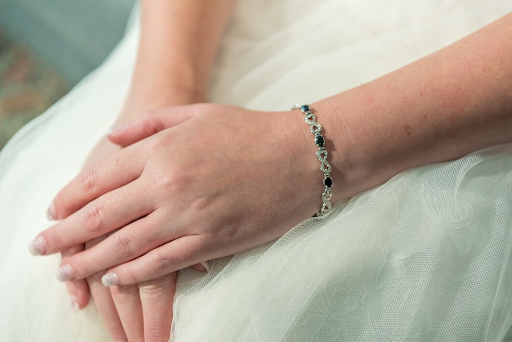4 minute read
Discover the intricate process of making permanent bracelets, from designing to welding. Explore the craftsmanship, materials, and techniques of creating custom jewellery that lasts a lifetime.
Permanent bracelets are more than just accessories. They are symbols of connection, commitment, and personal expression. These bespoke pieces are unique because of their custom designs and permanence, as they are often welded directly onto the wearer without the need for clasps or closures. This trend has gained popularity recently and represents a blend of modern technology and timeless jewellery craftsmanship.
Designing the Bracelet
The design process is the first step in making a permanent bracelet Hong Kong. This stage ensures the bracelet fits the wearer’s style and preferences. Since the bracelet will be worn permanently, clients often prefer minimalist and timeless designs that can be paired with various outfits.
The jewellery designer will collaborate closely with the client to choose the style, material, and any custom elements, such as engravings or embedded stones. Common materials used for permanent bracelets include sterling silver, gold, and platinum. Each material has durability, appearance, and weight characteristics that can influence the final design.
The designer may use hand-drawn sketches or digital software to represent the bracelet visually. This blueprint serves as the foundation for crafting and ensures the client is satisfied with the design before production begins.

Choosing the Materials
Once the design is finalised, the next step is selecting the materials. The type of metal chosen will determine not only the look but also the longevity of the bracelet. High-quality metals such as 14k or 18k gold, sterling silver, and platinum are favoured due to their durability and resistance to tarnish.
Other elements, like gemstones or enamel, may be incorporated into the design in addition to the metal. For permanent bracelets, simplicity is often significant, but subtle additions of stones like diamonds or sapphires can add a touch of elegance without overwhelming the piece.
Jewellers source the finest materials, ensuring the bracelet maintains its beauty and integrity over time.
Measuring and Fitting
Unlike traditional bracelets, which can be easily removed or adjusted, permanent bracelets must be fitted perfectly to the wearer’s wrist. Therefore, precise measurements are crucial. A jeweller will take detailed wrist measurements to ensure a comfortable yet secure fit.
Since these bracelets lack a clasp, the sizing must strike the right balance. It should be snug enough not to slip off but loose enough to allow natural movement without constriction.
Some jewellers offer custom fittings in person, while others may use digital fitting tools for remote clients. Regardless of the method, the perfect fit is critical to the bracelet’s comfort and longevity.
The Crafting Process
The jeweller begins crafting the bracelet once the design and fitting are complete. This process typically involves several stages:
Shaping the Metal: The jeweller cuts and shapes the metal into the desired form, whether a delicate chain, a solid cuff, or an intricately woven band. If gemstones are to be added, the jeweller will create settings for them at this stage.
Polishing: After shaping, the metal is polished to ensure a smooth, high-quality finish. Polishing removes any rough edges or imperfections, leaving the bracelet with a gleaming surface.
Stone Setting (if applicable): The stones are carefully set into the metal for bracelets, including gemstones. This delicate process requires precision to ensure the stones are securely held in place without damaging their structure.
Once the basic structure of the bracelet is complete, the final and most significant step is welding it onto the wearer’s wrist.
Why Choose a Permanent Bracelet?
The appeal of permanent bracelets lies in their symbolism and practicality. Many wear these bracelets as tokens of love, friendship, or personal milestones. Since the bracelet is permanent, it represents a lasting bond or commitment.
The lack of a clasp means the bracelet is not at risk of accidentally falling off or breaking, making it a durable accessory for daily wear. The minimalist design and high-quality materials also make transitioning between casual and formal settings easy.
Caring for Permanent Bracelets
While permanent bracelets are designed to last, they still require care to maintain their appearance. Regular cleaning with a soft cloth and mild jewellery cleaner can help remove dirt and oils accumulating over time.
For metal bracelets, occasional polishing by a jeweller may be needed to restore their shine. Gemstones, if present, should also be checked periodically to ensure they remain secure in their settings.
Conclusion
Permanent bracelets are a beautiful fusion of craftsmanship and innovation. Designing, crafting, and welding these pieces requires attention to detail and skill, resulting in a unique piece of jewellery that becomes a permanent part of the wearer’s life. Whether chosen for sentimental reasons or as a stylish accessory, a permanent bracelet is a lasting symbol of personal expression.




